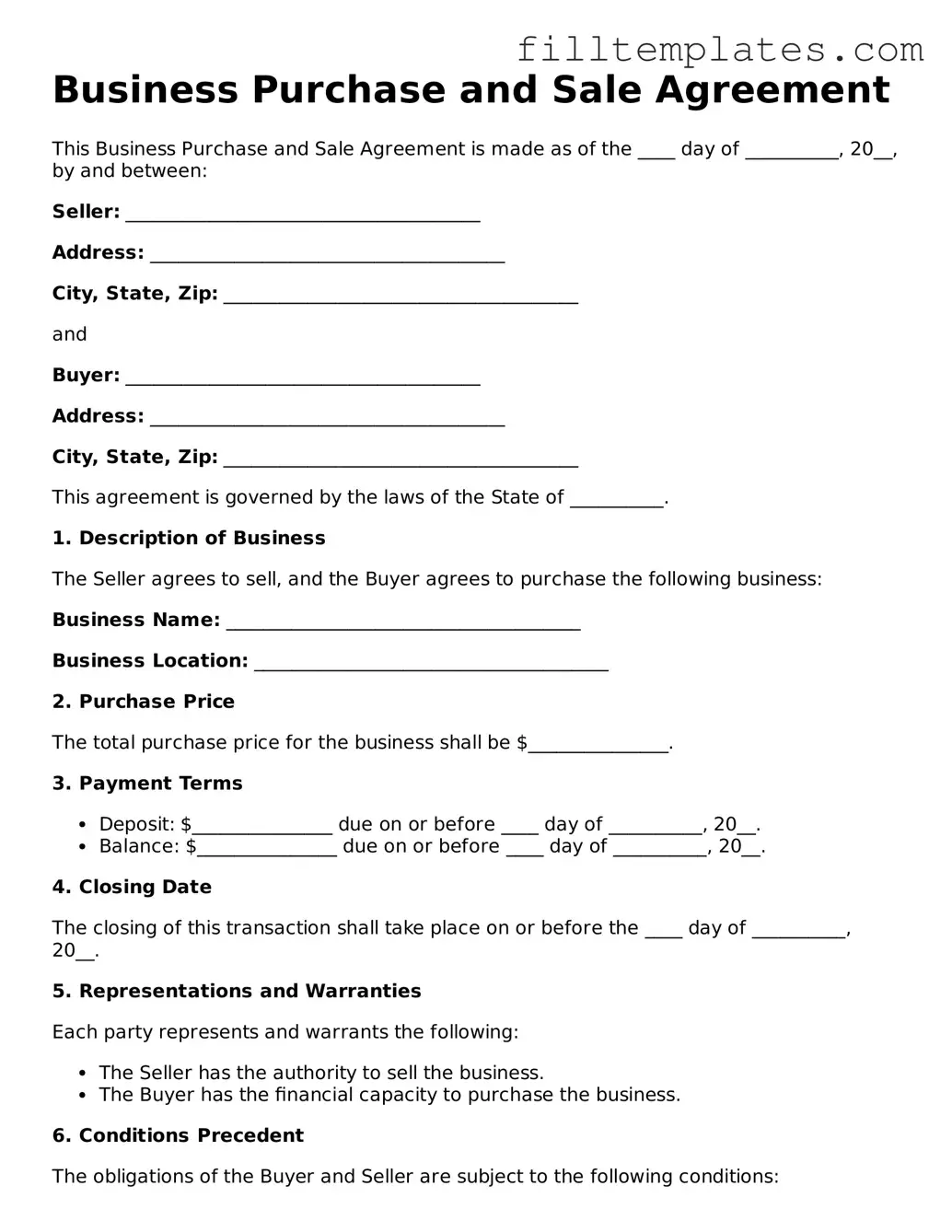Business Purchase and Sale Agreement
This Business Purchase and Sale Agreement is made as of the ____ day of __________, 20__, by and between:
Seller: ______________________________________
Address: ______________________________________
City, State, Zip: ______________________________________
and
Buyer: ______________________________________
Address: ______________________________________
City, State, Zip: ______________________________________
This agreement is governed by the laws of the State of __________.
1. Description of Business
The Seller agrees to sell, and the Buyer agrees to purchase the following business:
Business Name: ______________________________________
Business Location: ______________________________________
2. Purchase Price
The total purchase price for the business shall be $_______________.
3. Payment Terms
- Deposit: $_______________ due on or before ____ day of __________, 20__.
- Balance: $_______________ due on or before ____ day of __________, 20__.
4. Closing Date
The closing of this transaction shall take place on or before the ____ day of __________, 20__.
5. Representations and Warranties
Each party represents and warrants the following:
- The Seller has the authority to sell the business.
- The Buyer has the financial capacity to purchase the business.
6. Conditions Precedent
The obligations of the Buyer and Seller are subject to the following conditions:
- Completion of due diligence by the Buyer.
- Obtainment of necessary approvals and consents.
7. Governing Law
This Agreement shall be governed by and construed in accordance with the laws of the State of __________.
8. Signatures
IN WITNESS WHEREOF, the parties hereto have executed this Business Purchase and Sale Agreement as of the date first above written.
Seller:
______________________________________
Date: _______________________________
Buyer:
______________________________________
Date: _______________________________
